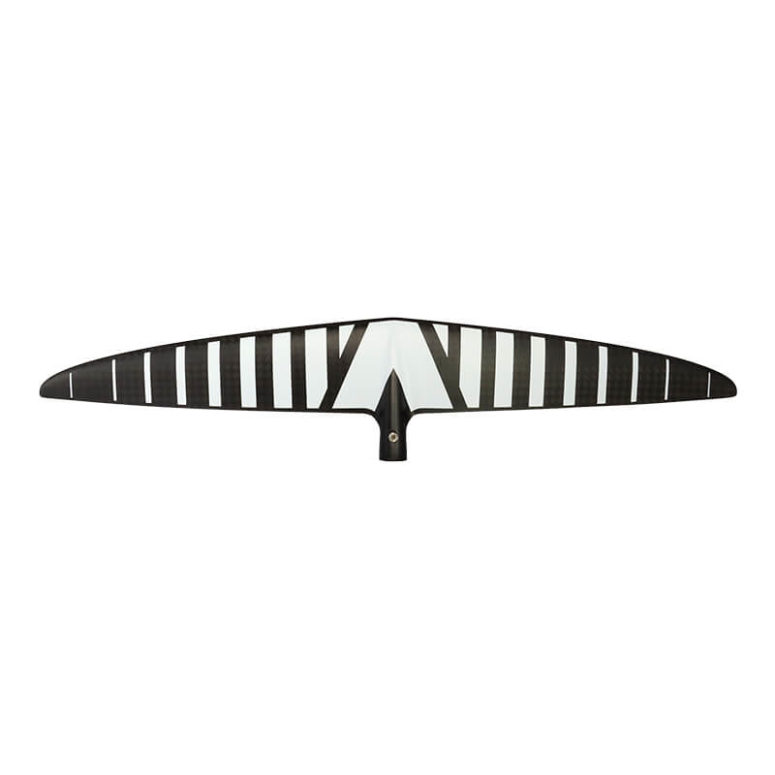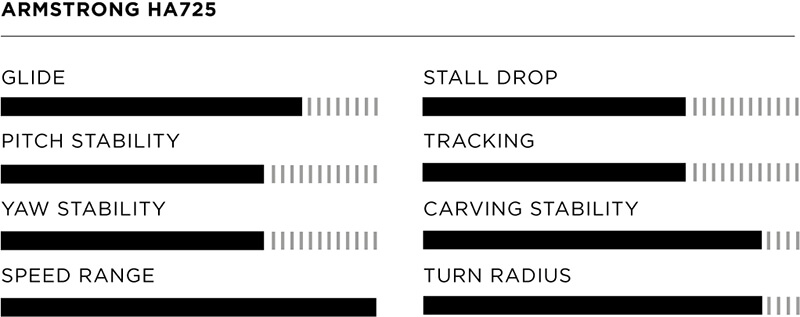

When you purchase gear through links on our site, we may earn a small commission. Here’s why you can trust our tests and our affiliate partner.

Modern small hydrofoils are redefining what we think is possible. Armstrong’s high aspect 725 is the latest addition to this end of the market, and it makes a compelling case for adding a high performance, do-it-all Swiss Army knife to your quiver. A word of caution — this foil might not be for everyone (and that’s alright).
If you’re already on Armstrong’s high aspect foils, the 1125 and 925 are staple pieces of kit. If you’re not, they’ve essentially managed to combine speed, glide, and turning ability into a series of high aspect designs that are consistent crowd pleasers in both the surf and winging domains. Users report that they’re able to ride smaller sizes than previously thought possible, giving them more room to grow into the gear instead of quickly surpassing it. The 725 pulls from this DNA, sharing characteristics of its larger siblings while amplifying the experience.
The 725 is part of Armstrong’s A+ System, which is an exceptionally strong and rigid assembly. Regardless of what wings, fuselage, or stabilizers you get from Armstrong, they’ll fit into the A+ system, making it a futureproofed investment. Premium titanium hardware is standard Armstrong, as is a large storage bag with individual covers for the various bits and pieces — these are solid and do a great job of protecting your investment. Unboxing an Armstrong 725 is the real deal.
Before diving into my performance review, some context on my own dimensions: I’m 155lbs/70kg, and tested with a mix of 25-85L boards for surf and winging. When prone surfing with the 72cm mast, 60cm fuselage, and V-tail stabilizer (200sq/cm), the 725 is a pure weapon. The wing combines insane turning response with high speed and glide better than any other small high aspect I’ve ridden to date, leading to a telepathic riding feel. It’s stable and efficient when bashing whitewater, handling odd angles with a predictability reminiscent of a mid-aspect wing. Late takeoffs and steep drops are easy to handle thanks to the 725’s gradual and underwhelming lift. On the other hand, its high stall speed means taking off in underpowered surf can be a real challenge — in knee to waist high surf, I often couldn’t successfully pump onto foil without stalling out. All that being said, I never reached for my backup 925 on small days. I just loved the 725’s feel so much that I made it work. I’d say this wing is happiest in waist or larger surf.
Winging the 725 with an 85cm mast and 232 stabilizer is a fun, fast, yet surprisingly stable experience. It handles breaches nicely. Accelerating to catch big, fast moving open ocean bumps was much easier on the 725 than the 925 (I tested them back-to-back in this scenario), although maintaining glide on the smaller wing required more finesse. That high stall speed rears its head when winging in lighter wind, and I found that I either needed a lot of wind power to get up quickly, or significant board speed before coming onto foil. Anything less, and I found myself stalling the 725. That being said, I suspect an Armstrong Forward Geometry wing board would likely improve takeoffs a bit…
In conclusion, the 725 has a terrific speed range, especially on the high end. Its maneuverability is also stellar, more than entertaining enough for advanced foil surfers. It’s an excellent crossover foil for winging — if you’re powered up. The setup is premium, stiff, and the opportunity for quiver expansion with Armstrong’s A+ System is all there. I’d recommend this foil to intermediate and advanced riders up to 155lbs/70kg, and advanced+ riders only beyond that weight. If you’re capable, you’ll love this thing. Oh, and I hear there’s a 525 on the way… KVS
